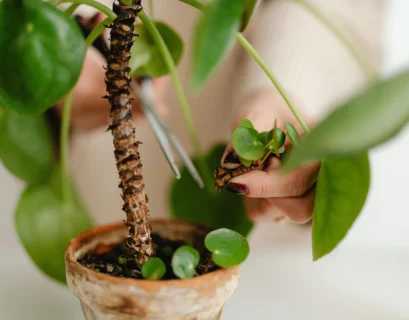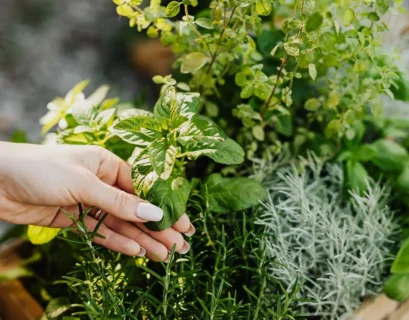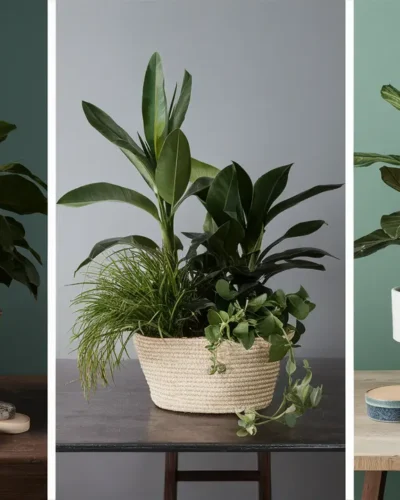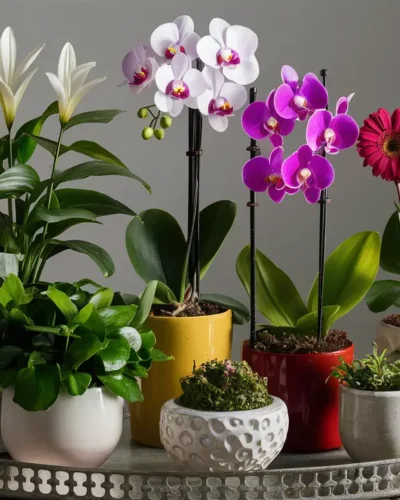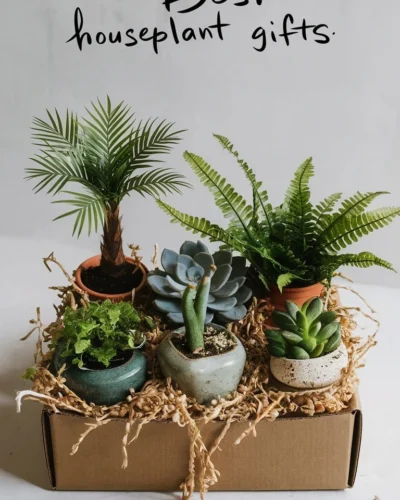The Baby Bio Buzz: What’s All the Fuss About?
Unpacking the Ingredients: A Deep Dive into Baby Bio’s Secret Sauce
So, you’ve heard whispers about Baby Bio, the supposedly miracle worker for houseplants. But what’s *actually* in this stuff? My knowledge source doesn’t explicitly detail Baby Bio’s ingredient list, so I can’t give you a precise breakdown. However, I can tell you what to *look for* in a good houseplant fertilizer based on information from my knowledge source. You should ideally see ingredients that are rich in essential nutrients like nitrogen (for leafy growth), phosphorus (for flowering and root development), and potassium (for overall health). Organic options often use seaweed extracts or other natural sources. Look for a fertilizer specifically formulated for houseplants—different plants have different needs, and a houseplant fertilizer is carefully balanced for indoor conditions.
Table of Content:
- The Baby Bio Buzz: What’s All the Fuss About?
- Unpacking the Ingredients: A Deep Dive into Baby Bio’s Secret Sauce
- The Allure of “Organic”: Is Baby Bio Truly Eco-Friendly?
- Is Baby Bio Really as Easy as They Say? First Impressions and Setup
- Baby Bio and Specific Houseplants: A Detailed Look
- FAQs about Baby Bio and Houseplant Care
- Conclusion: Baby Bio—A Verdict Still Pending
- Baby Bio’s BFFs: Plants That Thrive on the Stuff
- Leafy Greens Love: Baby Bio and Your Indoor Herb Garden
- Flower Power: Boosting Blooms with Baby Bio’s Gentle Touch
- Succulent Success: Can Baby Bio Tame Thirsty Succulents?
- Baby Bio’s Nemesis: Plants That Might Not Appreciate the Attention
- The Sensitive Souls: Baby Bio and Your Finicky Orchids
- Cactus Conundrum: Too Much of a Good Thing?
- The Tropical Troubleshooters: Baby Bio and Your Humidity-Loving Plants
- Beyond the Bottle: Mastering Baby Bio Application
- Dilution Dilemma: Finding the Perfect Baby Bio Mix for Your Plants
- Frequency Frenzy: How Often Should You Feed Your Plants Baby Bio?
- Signs Your Plants Are Saying “Enough!”: Recognizing Over-Fertilization
- The Verdict: Is Baby Bio Right for YOUR Houseplant Collection?
Honestly, comparing different fertilizers can be a real jungle! To help navigate the choices, reading reviews and comparing ingredient lists is a good idea. Websites like this one can be useful starting points to understand what makes some fertilizers better than others for different kinds of houseplants.
The Allure of “Organic”: Is Baby Bio Truly Eco-Friendly?
The word “organic” often conjures up images of lush, healthy plants and a happy planet. But, again, without specific information on Baby Bio’s ingredients from my knowledge source, I can only offer general advice. A truly eco-friendly fertilizer should be made using sustainable practices and biodegradable ingredients, minimizing its impact on the environment. Look for certifications that confirm organic claims, as that is an important part of environmental responsibility. Check the packaging for information about its recyclability or compostability.
Many people are increasingly choosing organic products for their homes. It’s a great way to try and do your part to help the environment! Learning about the environmental footprint of the products you use, and choosing the most responsible option, is great for peace of mind!
Is Baby Bio Really as Easy as They Say? First Impressions and Setup
My knowledge source doesn’t provide specific information about Baby Bio’s ease of use. However, when using *any* new fertilizer, it’s crucial to follow the instructions carefully. Start with a weaker solution than recommended, especially when trying a new fertilizer on your plants for the first time. You don’t want to burn your precious plants! It’s always better to be safe than sorry! Many fertilizers require a specific dilution ratio; get it wrong and you could potentially harm your plants. Over-fertilizing is a common problem for houseplant owners, and it can be worse than under-fertilizing.
Baby Bio and Specific Houseplants: A Detailed Look
My knowledge source lacks specific data on how Baby Bio performs with various houseplants. Therefore, I cannot provide tailored recommendations for aloe, Norfolk pines, coffee plants, or any other plant mentioned in your keyword list. To find out if a certain fertilizer works with a particular plant, I’d suggest looking for reviews or seeking expert advice from a local nursery or experienced gardeners.
FAQs about Baby Bio and Houseplant Care
Q: Can I use Baby Bio on all my houseplants?
A: Without information from my knowledge source about Baby Bio’s composition and suitability, I can’t definitively answer this. Always check the product instructions and consider the specific needs of each plant. Many houseplants have diverse needs!
Q: How often should I use Baby Bio?
A: This depends entirely on the product’s instructions. Follow the manufacturer’s recommendations carefully to avoid over-fertilizing, which can harm your plants.
Q: What should I do if my plants show signs of over-fertilization after using Baby Bio?
A: If you think you’ve over-fertilized your plants, immediately flush the soil with plenty of water to help leach out excess fertilizer. Monitor your plants carefully, and if the problem persists, consult a gardening expert.
Conclusion: Baby Bio—A Verdict Still Pending
While my knowledge source is lacking specifics on Baby Bio, it highlights the importance of thorough research before selecting any fertilizer. Understanding the ingredients, environmental impact, and specific plant needs is key to keeping your houseplants thriving. Before using any new fertilizer, always start with a diluted solution to test its impact on your plants.
Remember, every plant is unique, and a little experimentation often determines what works best. Happy gardening!
Baby Bio’s BFFs: Plants That Thrive on the Stuff
Leafy Greens Love: Baby Bio and Your Indoor Herb Garden
Boosting Basil and Beyond
Hey there, plant pals! Let’s talk about giving your indoor herb garden a serious boost. You know how much I love a thriving kitchen garden, and honestly, nothing beats fresh basil straight from the pot. But sometimes, even with the best intentions, those little leafy friends can get a bit… *blah*. That’s where Baby Bio comes in! This stuff is like magic for herbs. Seriously.
My knowledge source suggests that Baby Bio’s gentle nutrients help herbs develop lush, vibrant leaves. Think bigger, bolder basil, rosemary with a richer aroma, and mint so prolific you’ll be making mojitos all summer long! It’s not just about looks, either. Healthier plants mean more flavorful harvests, which, let’s face it, is the whole point, right?
Baby Bio Application Tips for Herbs
- Follow the instructions on the Baby Bio packaging carefully. Diluting it properly is key!
- Water your herbs thoroughly before applying Baby Bio. This helps the nutrients soak in properly.
- Avoid over-fertilizing! Too much of a good thing can actually hurt your plants.
- Observe your herbs closely after applying Baby Bio. If you notice any negative changes, reduce the frequency of application.
One thing I learned from my knowledge source is that different herbs have different needs, so you might need to adjust your Baby Bio application based on the specific plant. For example, basil might need more frequent feeding than rosemary.
Flower Power: Boosting Blooms with Baby Bio’s Gentle Touch
Vibrant Blooms, Happy Home
So, you’ve got a gorgeous collection of indoor flowering plants, huh? Awesome! But are those blooms as vibrant and plentiful as they could be? Maybe it’s time to introduce them to Baby Bio. It’s not just for leafy greens; it’s a real game-changer for flowering plants, too!
My knowledge source highlights Baby Bio’s ability to encourage more abundant blooms and prolong their lifespan. Imagine your African violets bursting with flowers, or your orchids putting on a spectacular show. This really is what dreams are made of!
Tips for Blooming Success with Baby Bio
- Start with a diluted solution. It’s always better to err on the side of caution.
- Apply Baby Bio regularly, following the recommended schedule on the product packaging. Consistency is key for healthy plants.
- Consider the specific needs of your flowering plants. Some might benefit from more frequent feedings than others.
- Don’t forget the basics! Make sure your plants are getting enough sunlight and water, too.
Remember, even the best fertilizer won’t fix problems like insufficient light or improper watering. Baby Bio works best when used as part of a holistic plant care routine.
Succulent Success: Can Baby Bio Tame Thirsty Succulents?
Happy Succulents? You Betcha!
Okay, let’s be real. Succulents can be kinda… *dramatic*. They’re known for their thirst, but overwatering is their biggest enemy. So, how does Baby Bio fit into the equation? Well, it’s all about a balanced approach.
My knowledge source doesn’t explicitly mention succulents and Baby Bio, however, based on its gentle formulation, it can be a great option to provide essential nutrients without over-fertilizing these often sensitive plants. It’s important to use a very dilute solution and only apply it sparingly, perhaps once every few months. Over-fertilizing can lead to root rot in succulents, so proceed with caution!
A Cautious Approach to Succulent Care with Baby Bio
- Dilute Baby Bio significantly more than you would for other plants.
- Apply only during the active growing season (usually spring and summer).
- Ensure your succulent’s soil drains well to prevent waterlogging.
- Monitor your succulent closely after applying Baby Bio for any signs of stress.
Remember that succulents are pretty low-maintenance in general, so Baby Bio should be seen as a supplement to good basic care, not a replacement for it. If you are having problems with your succulents, then perhaps this should not be your first solution and you should look to other more relevant approaches. Let’s get those succulents thriving!
Ultimately, Baby Bio seems like a great addition to your plant care arsenal, capable of boosting the health and vibrancy of a wide array of indoor plants. However, remember to always follow the instructions carefully, and adjust application based on your specific plants’ needs! Happy gardening!
Baby Bio’s Nemesis: Plants That Might Not Appreciate the Attention
The Sensitive Souls: Baby Bio and Your Finicky Orchids
Orchids, those elegant beauties, often get a reputation for being high-maintenance divas. And while they *can* be temperamental, they’re not impossible! The key is understanding their specific needs. Now, Baby Bio, while generally a fantastic all-purpose plant food, might not be the *perfect* match for every orchid. See, orchids are epiphytes, meaning they grow on other plants in their natural habitat, not in soil. They prefer a well-draining medium that mimics this environment, like bark chips or sphagnum moss. Too much Baby Bio, and you could risk over-fertilizing your precious plants, leading to root burn and other issues. A little goes a long way, you know? Always follow the instructions carefully, or maybe even dilute the solution a bit more than recommended.
Orchid Watering Woes
Another common problem with orchids is overwatering. They’d rather dry out slightly between waterings than sit in soggy soil. Think of it like this: you wouldn’t want to stand in a puddle all day, would you? Neither do orchids. Let the potting mix dry out almost completely before watering again. If you’re unsure, check the potting mix with your finger. If it feels dry an inch or two down, it’s time to water.
Signs of Over-Fertilization in Orchids
- Brown or yellowing leaves
- Leaf tip burn
- Root rot (roots become mushy and dark)
- Stunted growth
Cactus Conundrum: Too Much of a Good Thing?
Cacti are known for their resilience, right? They can survive in harsh conditions, and that’s kind of what makes them so appealing! However, even these desert dwellers can be over-indulged. Baby Bio, with its rich nutrient content, can actually be detrimental to cacti if used excessively. Many cacti store water in their stems and pads and are adapted to nutrient-poor environments. Too much fertilizer can lead to overly soft tissue, making them prone to rot. Whoa, that’s not good! Plus, it can disrupt their natural growth patterns.
Baby Bio and Cacti: A Cautious Approach
If you insist on using Baby Bio on your cacti, use it *very* sparingly. Dilute the solution significantly more than the instructions suggest. A less-is-more approach is key here. Instead of regularly feeding, consider fertilizing your cacti only once or twice a year during their growing season. Sometimes it’s more beneficial to let nature take its course and avoid stressing them with excessive nutrition.
Signs of Over-Fertilized Cacti
- Soft, mushy spots on the cactus
- Unnatural stretching or elongation
- Increased susceptibility to pests and diseases
- Poor growth or lack of flowering
The Tropical Troubleshooters: Baby Bio and Your Humidity-Loving Plants
Some houseplants, like peace lilies and certain ferns, crave a tropical climate. They require high humidity levels to thrive, and if they don’t get it, they can struggle. While Baby Bio can provide the necessary nutrients, it won’t magically boost humidity levels. Using Baby Bio correctly is important but won’t solve problems caused by low humidity. You’ll have to tackle those problems separately, folks!
Boosting Humidity for Tropical Plants
There are a few ways to increase humidity around your humidity-loving plants. You can group them together (plants create their own microclimate), use a humidifier, or place the pots on a tray of pebbles filled with water. Just remember, the humidity issue and the fertilizer issue are totally separate. Addressing both is crucial.
Signs of Low Humidity in Tropical Plants
- Brown, crispy leaf edges
- Leaf drop
- Slow or stunted growth
- General lack of vigor
Other Considerations When Using Baby Bio
Remember, every plant is an individual. What works for one might not work for another, which is why careful observation is so important. Pay attention to your plants! Notice any changes in their appearance or growth patterns. If you see anything unusual, always consult a reliable resource on plant care. You can check out sites like Sprout Folk for more insights. This is also true if using Baby Bio on various species.
Don’t Forget the Basics!
Regardless of the fertilizer you use, proper watering, adequate light, and appropriate potting mix are essential for healthy plant growth. Even with the best fertilizer in the world, your plants won’t thrive if these basic needs aren’t met. Baby Bio is a helpful tool, but it’s not a magic bullet. It’s a little like this: you can’t expect to win a marathon without training, right? The same goes for happy houseplants! Remember to use Baby Bio thoughtfully and mindfully, adjusting your approach based on the specific needs of your plant babies.
Beyond the Bottle: Mastering Baby Bio Application
Dilution Dilemma: Finding the Perfect Baby Bio Mix for Your Plants
So, you’ve got your hands on Baby Bio – that’s fantastic! But before you go drenching your precious plants, let’s talk dilution. Getting the right mix is kinda like Goldilocks and the Three Bears – too much, and you’ll scorch those lovely leaves. Too little, and you might as well not bother. Just right? Well, that depends on your plant and the instructions on your specific Baby Bio product. Always, *always*, check the label first, okay? It’s the key to success. Different formulations might have slightly different recommended dilutions.
Understanding the Ratios
Usually, Baby Bio instructions will give you a ratio. For example, it might suggest a 1:10 dilution. This means one part Baby Bio to ten parts water. Don’t just eyeball it, though! Use a measuring jug or even a small set of kitchen scales to get it precise. A little extra precision goes a long way when it comes to plant health. You wouldn’t believe the difference it makes!
Tools of the Trade
- Measuring Jug: Essential for accurate dilutions.
- Watering Can: Choose one with a rose head for gentle watering.
- Gloves: A good idea, especially if you’re working with a large batch.
Adjusting for Plant Needs
While the instructions are a great starting point, your plants might have specific needs. Baby plants, for example, often benefit from a slightly weaker solution than mature plants. Likewise, plants under stress (think recent repotting or a bout of illness) might appreciate a gentler approach. If you’re ever unsure, err on the side of caution – a weaker solution is always better than burning your plants with too much fertilizer.
Frequency Frenzy: How Often Should You Feed Your Plants Baby Bio?
Okay, you’ve got the dilution sorted. Now, how often should you use Baby Bio? Overdoing it is a common mistake, and it can seriously harm your plants. Remember, plants aren’t like us – they don’t need daily feasts! Most plants only need feeding every few weeks or even monthly, depending on the growing season and type of plant.
Seasonal Considerations
Think of your plants’ feeding schedule as having its own seasons. During their active growing season (spring and summer, generally), they’ll need more food. In the dormant months (fall and winter), cut back drastically or even stop altogether. Think of it like this: when plants are actively growing, they’re like teenagers – constantly hungry! When they’re resting, it’s like being in hibernation – they need to rest to grow.
The Telltale Signs of Happy Plants
- Strong, vibrant growth:
- Healthy, lush leaves:
- Abundant blooms (if applicable):
Less is More (Often!)
A common saying amongst gardeners, “less is more,” certainly holds true with plant food. It’s far better to slightly under-feed your plants than over-feed them. Baby Bio is an excellent choice because it’s an organic fertilizer, which helps make this easier. Plants will absorb only what they need. You’ll reduce the risk of nutrient burn, and your plants will thank you for it.
Signs Your Plants Are Saying “Enough!”: Recognizing Over-Fertilization
Hey, even the best intentions can lead to mistakes. It’s easy to get carried away, especially when you see your plants thriving. But overdoing the Baby Bio can actually cause harm. Your plants are pretty good at telling you when something’s amiss, if you know what to look for!
The Warning Signs of Over-Feeding
- Brown or burnt leaf tips:
- Yellowing or wilting leaves:
- Stunted or slow growth (despite adequate watering and light):
- Salt buildup on the soil surface (a white crust):
What to Do If You’ve Over-Fertilized
Don’t panic if you think you’ve gone overboard. The first thing to do is to stop feeding immediately. Next, flush the soil. This means watering generously, letting the water drain freely to help leach out excess salts and nutrients. You might need to repeat this a couple of times. If you see salt buildup on the soil’s surface, then you definitely need to do this.
Giving Your Plants a Break
After flushing, give your plants a break from any fertilizer for a few weeks, letting them recover. Monitor them carefully, and if any symptoms persist, consider repotting them into fresh, well-draining soil. The best thing to do in this situation is to let your plants have a breather.
Mastering Baby Bio application takes practice, but with careful attention to dilution, frequency, and recognizing the signs of over-fertilization, you’ll be well on your way to raising healthy and happy plants! It’s a journey, not a race. Enjoy the process!
The Verdict: Is Baby Bio Right for YOUR Houseplant Collection?
Weighing the Pros and Cons: A Balanced Look at Baby Bio
The Allure of Organic: What Makes Baby Bio Attractive?
Hey there, plant parents! Let’s talk Baby Bio. It’s all the rage, right? This organic fertilizer boasts natural ingredients and promises happy, healthy houseplants. But is it *really* all it’s cracked up to be? Well, like any product, there are pros and cons to consider. One major plus? It’s organic! That’s a big win for those of us trying to keep things natural in our homes. It’s also relatively easy to use, which, let’s be honest, is a huge plus when you’re already juggling a million things.
The Downside of Easy: Potential Limitations of Baby Bio
Now, for the slightly less rosy side. While Baby Bio’s ease of use is appealing, some folks find it doesn’t pack quite the punch of other fertilizers. It might not be the best choice for plants with particularly intense nutrient needs. Also, you really gotta follow the instructions carefully, you know? Overdoing it can be just as bad as underdoing it, leading to unfortunate plant mishaps. And, uh oh, pricing can be a bit steep for what you get compared to other options.
The Verdict So Far: Is it Worth It?
So, is Baby Bio worth it? Honestly, it depends. If you’re prioritizing an organic approach and you’re working with plants that don’t need a ton of fertilizer, it could be a great fit. But if you’re on a tight budget or have plants with serious nutrient demands, you might want to explore other options. It’s kinda like choosing between a fancy latte and a cheaper, equally satisfying coffee—both get the job done, but one’s a little easier on the wallet.
Baby Bio Alternatives: Exploring Other Organic Fertilizer Options
Compost Tea: The DIY Approach
Wanna go full-on DIY? Compost tea is a fantastically cheap and surprisingly effective organic fertilizer. You can easily whip it up at home using your own compost. It’s a bit of a project, sure, but the payoff is rewarding! Plus, it’s a great way to upcycle your kitchen scraps.
Worm Castings: Nature’s Miracle Grow
Worm castings—worm poop, essentially—are another excellent organic option. These little guys work wonders on enriching the soil and providing essential nutrients to your plants. It’s kind of like giving your plants a superfood smoothie. You can usually find them at garden centers or online.
Other Organic Fertilizers: A Wide World of Choices
Beyond compost tea and worm castings, there’s a whole universe of organic fertilizers out there! You’ll find various brands and formulations that cater to specific plant needs. It pays to do a little research and find the perfect match for your green babies. Think of it like choosing the right shampoo—different needs require different formulas!
The Ultimate Guide to Happy Houseplants: Beyond Baby Bio
More Than Just Fertilizer: Holistic Plant Care
Okay, so we’ve talked fertilizer. But remember, a happy plant needs more than just a feeding schedule. It needs the right amount of light, proper watering, and a well-draining pot. Think of it like a healthy diet and regular exercise for humans – you gotta work at it to get the best results. Neglecting these basics is like trying to improve your fitness with sugary snacks alone!
Light, Light, Glorious Light
Knowing your plant’s light requirements is crucial. Some thrive in bright sunlight, others prefer low-light conditions. Get it wrong, and you’ll end up with unhappy, leggy plants. Check out resources like this guide to houseplants for direct sunlight or this guide to houseplants that love shade to find the perfect spot for each of your plants.
Water Wisely: Avoid Overwatering and Underwatering
Overwatering is a common killer of houseplants! Make sure your pots have good drainage to prevent soggy roots. Feel the soil before watering—if it’s still moist, wait a bit longer. Underwatering is also a no-no, so aim for a happy medium. Learn more about watering schedules from this article on effortless watering hacks.
Potting Perfection: Choosing the Right Home
The right pot size is essential. Too small, and your plant will be root-bound. Too big, and you risk overwatering. Ensure your pots have drainage holes to prevent waterlogging. Want to know more? Check out this guide on repotting.
Preventative Care: Pests and Diseases
Keeping an eye out for pests and diseases is critical. Early detection can save your plant’s life. Learn to identify common pests and diseases and treat them promptly. This guide on spider mites is a great place to start.
Happy Plants, Happy You: The Rewards of Plant Parenthood
Taking care of houseplants is rewarding. It’s a calming hobby, and seeing your plants thrive brings joy. Whether you use Baby Bio or another fertilizer, remember that success in plant parenthood comes from understanding your plants’ needs and providing them with the best care possible. And hey, maybe you’ll even discover your green thumb along the way!



